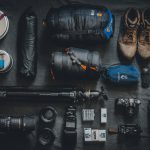There’s something magical about spending time in nature, breathing in the fresh air, and disconnecting from the demands of everyday life. Camping offers a unique opportunity to immerse yourself in the great outdoors and create lasting memories. If you’re new to camping, the idea of venturing into the wilderness may seem daunting. However, with the right knowledge and preparation, you can have a successful and enjoyable camping experience. In this article, we will provide a beginner’s guide to camping, covering everything from choosing a campsite and essential gear to setting up camp and staying safe.

Choosing a Campsite
The first step in planning a camping trip is choosing the right campsite. Research local campgrounds or national parks in your area and consider factors such as location, amenities, and accessibility. Determine whether you prefer a developed campground with amenities like restrooms and potable water or a more remote and primitive camping experience. Check if reservations are required and be aware of any rules or regulations specific to the campsite.
Essential Camping Gear
Having the right camping gear is crucial for a comfortable and successful camping trip. Here are some essential items to consider:
- Tent: Choose a tent that suits your needs in terms of size, weather resistance, and ease of setup.
- Sleeping Bag: Invest in a sleeping bag appropriate for the expected temperatures during your trip.
- Sleeping Pad: Provide cushioning and insulation between you and the ground for a more comfortable sleep.
- Camping Stove and Cookware: Consider a portable camping stove and lightweight cookware for meal preparation.
- Lighting: Pack a headlamp or flashlight for navigating your campsite at night.
- First Aid Kit: Prepare a well-stocked first aid kit with essential supplies and medications.
- Clothing and Personal Items: Pack appropriate clothing layers, sturdy footwear, toiletries, and personal items.
Setting Up Camp
Once you arrive at your chosen campsite, it’s time to set up camp. Follow these steps:
- Find a Level Spot: Look for a flat and level area to set up your tent. Remove any rocks or debris that may cause discomfort.
- Clear the Area: Clear the ground from twigs, rocks, and other sharp objects that may puncture your tent floor.
- Pitching the Tent: Follow the instructions provided with your tent to set it up properly. Ensure that the rainfly is installed if there’s a chance of rain.
- Organise Gear: Set up a designated area for your gear and organise it for easy access.
- Set Up Cooking Area: Choose a safe and well-ventilated area for cooking. Keep food away from your sleeping area to prevent attracting animals.
Campfire Safety
Campfires are an integral part of the camping experience, but it’s crucial to practice campfire safety to prevent accidents and minimise environmental impact.
Follow these guidelines:
- Check Local Regulations: Ensure that campfires are allowed at your campsite and familiarise yourself with any restrictions or fire bans.
- Choose a Safe Location: Select a spot for your campfire away from overhanging branches, dry grass, and tents.
- Clear the Area: Clear a circle at least 10 feet in diameter around the fire pit from any flammable materials.
- Build a Proper Fire Pit: Create a fire pit with rocks or use an existing fire ring if available.
- Safe Fire Starters: Use approved fire starters such as matches or lighters. Avoid using flammable liquids.
- Supervise the Fire: Never leave the fire unattended and ensure it is fully extinguished before leaving the campsite or going to sleep.
Leave No Trace Principles
Camping responsibly means practicing Leave No Trace principles to minimise your impact on the environment. Follow these guidelines:
- Pack Out What You Pack In: Dispose of waste properly and pack out all trash, including food scraps and litter.
- Respect Wildlife: Observe wildlife from a distance and avoid feeding or approaching them.
- Stay on Designated Trails: Stick to established trails to protect vegetation and minimise soil erosion.
- Respect Quiet Hours: Be considerate of other campers by keeping noise levels to a minimum during designated quiet hours.
- Leave Natural Objects: Refrain from collecting natural objects such as rocks, plants, or artifacts.
Safety Considerations
Prioritising safety is essential when camping. Consider the following safety tips:
- Weather Awareness: Stay informed about weather conditions and be prepared for changes. Bring appropriate clothing layers and gear for different weather scenarios.
- Insect Protection: Protect yourself from insects by using insect repellent, wearing long sleeves and pants, and using a mosquito net if necessary.
- Wildlife Precautions: Be aware of wildlife in the area and take precautions such as storing food properly and keeping a safe distance.
- Emergency Preparedness: Familiarise yourself with the campsite’s emergency procedures and have a plan in case of emergencies. Carry a first aid kit and know how to use it.
- Navigation Tools: Carry a map, compass, orGPS device to navigate the area and avoid getting lost.
Summary
Camping is a wonderful way to connect with nature, unwind, and create lasting memories. By following this beginner’s guide, you can ensure a successful and enjoyable camping experience. From choosing the right campsite and essential gear to setting up camp, practicing campfire safety, and respecting the environment, these tips will help you embark on your camping adventure with confidence. Remember to prioritise safety, be mindful of the environment, and embrace the serenity of the great outdoors. So, pack your gear, set up camp, and immerse yourself in the beauty of nature through the wonderful world of camping.





